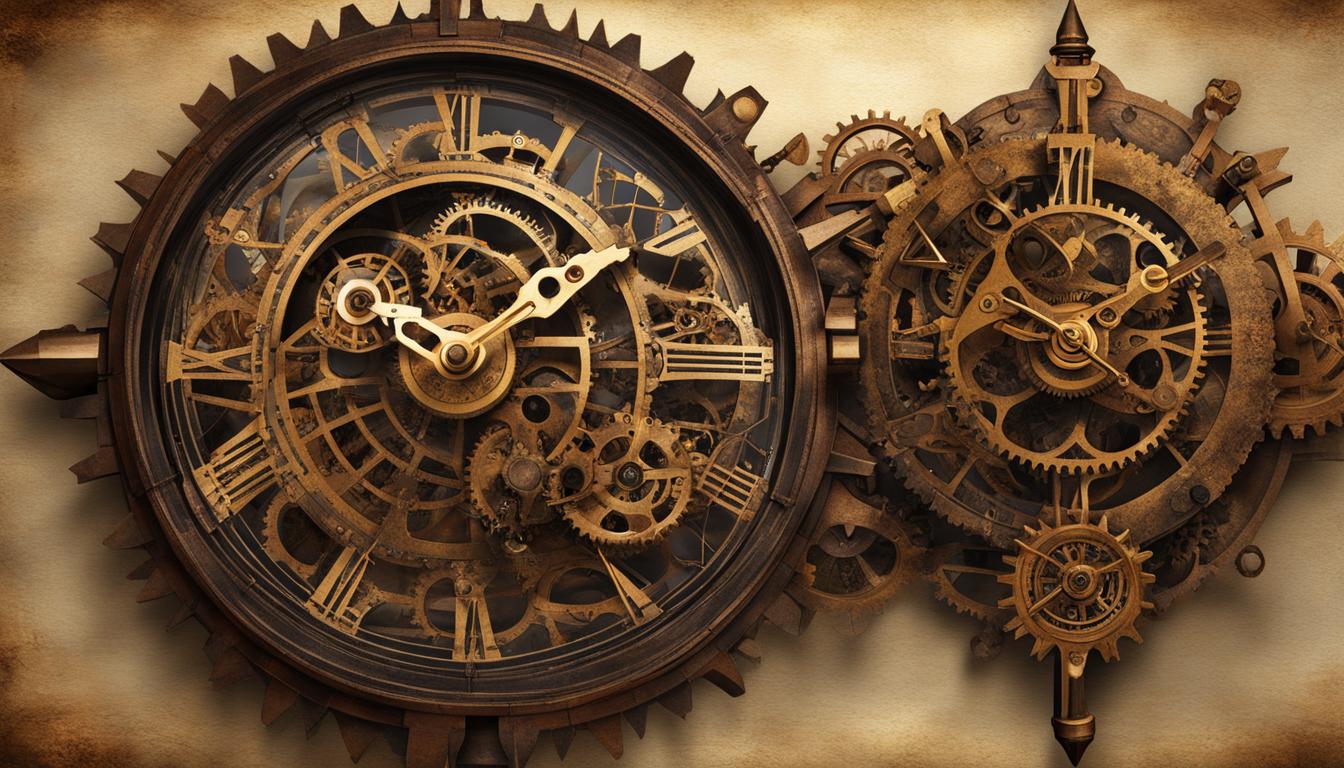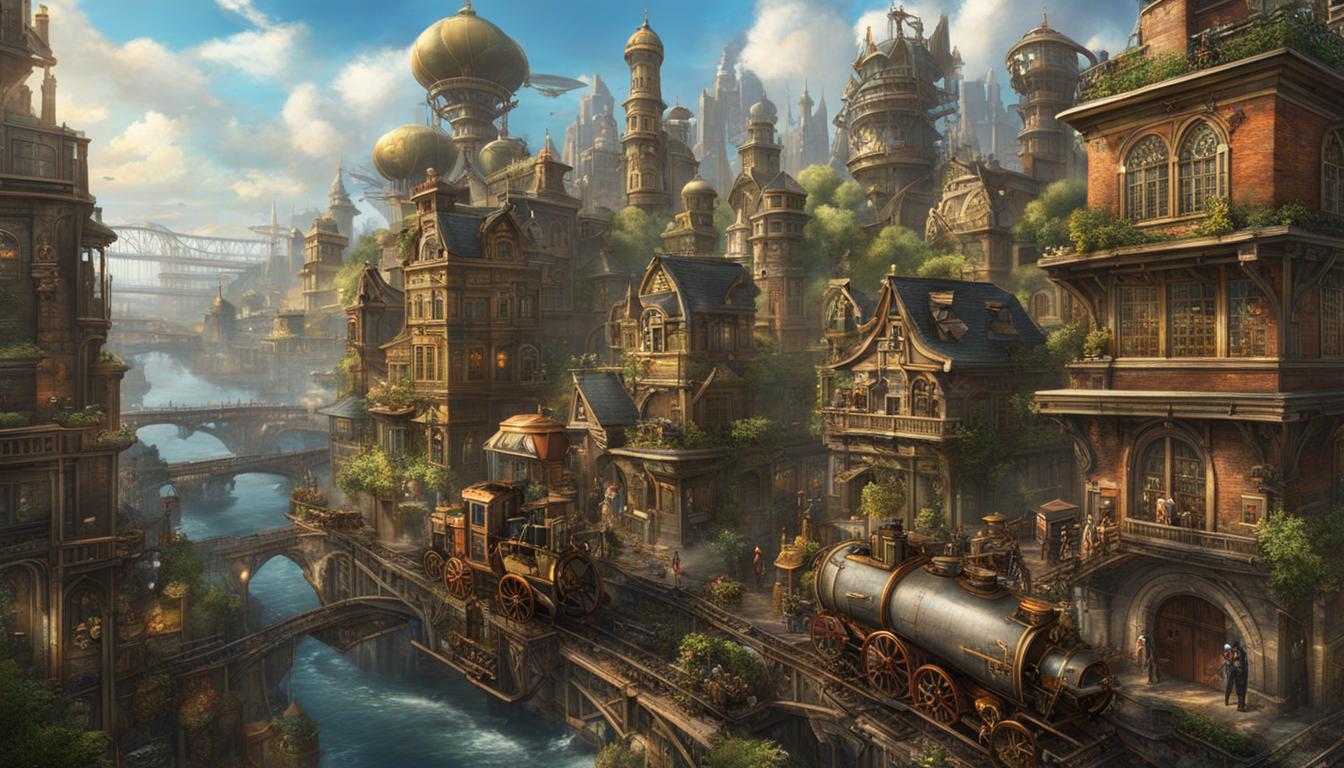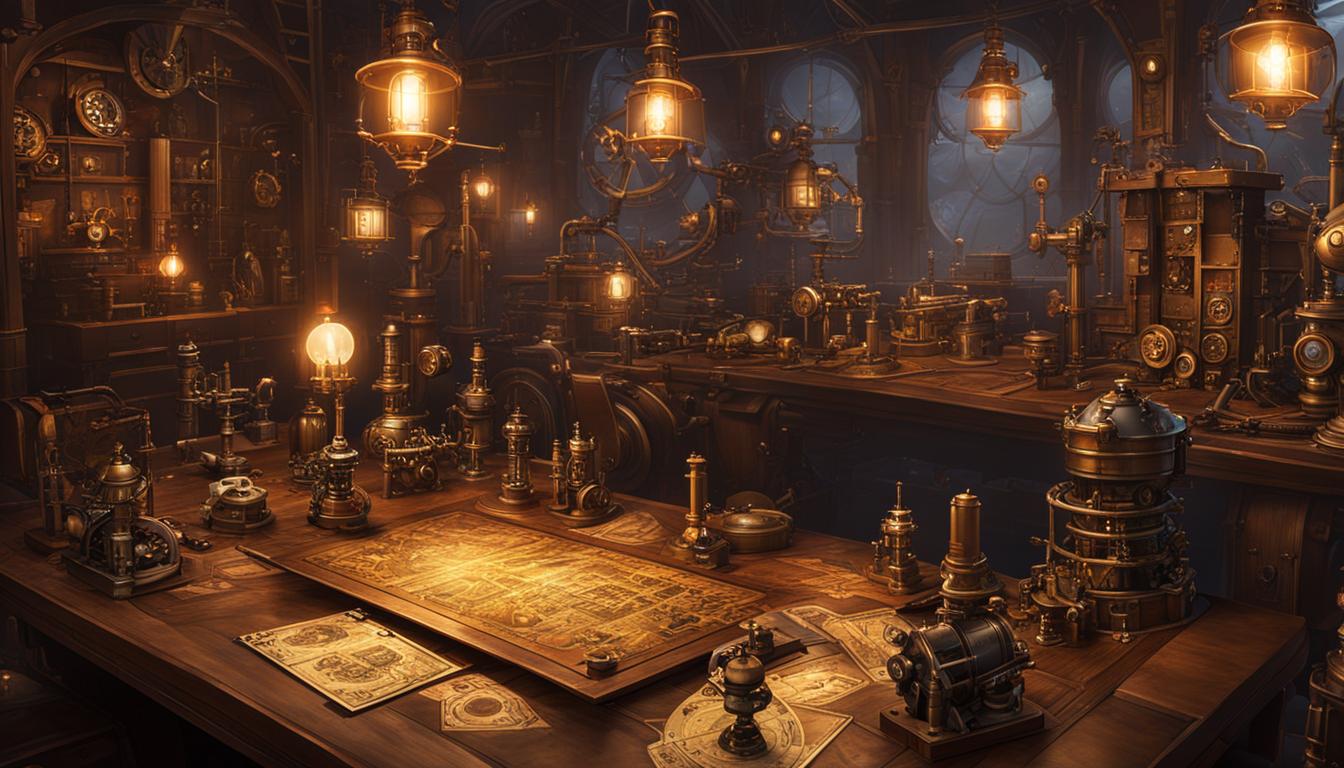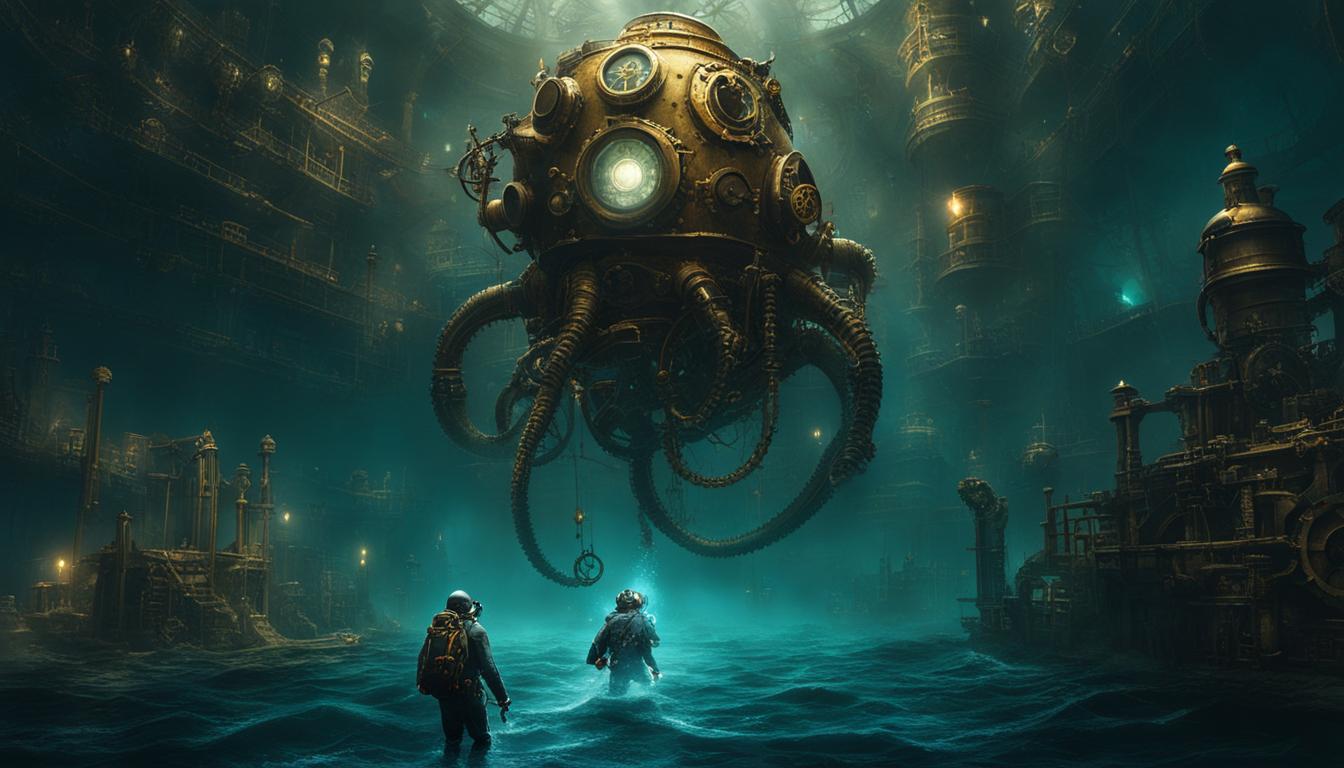Steampunk, the captivating subgenre of science fiction, draws its inspiration from an intriguing blend of classic literature and retrofuturistic technology. With its aesthetic rooted in 19th-century steam-powered machinery, steampunk transports readers to alternative histories and fantastical worlds.
At the core of steampunk lies its literary influences, particularly the works of revered authors such as Jules Verne and H. G. Wells. These visionaries wove intricate tales filled with imaginative machines and futuristic concepts, shaping the foundation of many steampunk narratives. Through their literary masterpieces, Verne and Wells ignited a creative spark that continues to fuel the steampunk genre.
Key Takeaways:
- Steampunk is a subgenre of science fiction that incorporates retrofuturistic technology and aesthetics inspired by 19th-century steam-powered machinery.
- The genre draws inspiration from classic literature, particularly the works of Jules Verne and H. G. Wells, whose visionary ideas serve as the foundation for many steampunk narratives.
- Steampunk explores alternative histories, fantastical worlds, and anachronistic technologies, making it a captivating hybrid genre.
- Japanese steampunk has its own unique subculture, with steampunk-themed manga and anime gaining popularity since the 1940s.
- Steampunk continues to evolve, inspiring various art forms, fashion trends, and even political movements.
Steampunk as a Cultural Movement
Steampunk has transcended its origins as a literary subgenre of science fiction and has evolved into a vibrant cultural movement. It has not only inspired a wide range of subgenres, including alternate histories, graphic novels, and even erotica, but it has also given rise to a thriving steampunk subculture. This subculture has given birth to conventions that attract thousands of enthusiasts from all over the world, providing a space for like-minded individuals to gather and celebrate their shared love for all things steampunk.
One of the defining aspects of the steampunk movement is its distinctive fashion. Steampunk fashion combines elements of Victorian-era attire with futuristic gadgets and accessories, resulting in a visually striking aesthetic. Steampunk enthusiasts take pride in their attention to detail, often crafting their own intricate costumes and accessories that showcase their individuality and creativity. With its emphasis on fashion as a form of self-expression, steampunk has become a style statement that extends beyond the boundaries of the subculture.
Steampunk has also made a significant impact on the world of art. Steampunk-themed artwork is characterized by its intricate and fantastical designs, often featuring images of retrofuturistic machinery and steam-powered contraptions. Artists draw inspiration from the rich imagery and themes of steampunk to create stunning works that transport viewers to alternate realities and inspire a sense of wonder. From paintings and sculptures to digital art and installations, steampunk art has become a prominent and respected genre within the art world.

The Evolution of Steampunk and its Political Dimensions
Steampunk, while initially a literary subgenre, has transformed into a vibrant cultural movement with significant political dimensions. It has evolved through different waves of development, each contributing to its growth and influence. The first wave, which emerged in the 1980s, saw the rise of steampunk as a literary genre with notable works by authors like Tim Powers, James Blaylock, and K. W. Jeter. These pioneers laid the foundation for the imaginative blend of history, technology, and social commentary that would come to define steampunk.
The second wave, beginning around 2006, brought forth a countercultural community centered around the do-it-yourself (DIY) ethos. Steampunk enthusiasts embraced a hands-on approach, creating their own fashion, jewelry, and other artistic expressions. This DIY culture expanded steampunk beyond the boundaries of literature, making it a material culture that celebrates craftsmanship and individuality. By rejecting mass production and embracing handmade creations, steampunk became a form of protest against the closed nature of modern consumer technologies.
Steampunk is more than just an aesthetic or a genre, it’s a reimagining of history and a challenge to the dominant narratives of progress and modernity. It allows us to envision a world where technology and magic coexist, where individuals hold the power to shape their own destinies.
Steampunk also incorporates elements of retrofuturism, which melds the technology of the past with the imagination of the future. This fusion of historical aesthetics and speculative fiction allows steampunk to make powerful political statements and challenge conventional notions of progress. By employing its “ethics of style,” steampunk becomes a vehicle for exploring alternative visions of society and inviting critical reflection on the relationship between technology, power, and social justice.
With its unique blend of history, creativity, and political engagement, steampunk continues to captivate and inspire. It offers a space for individuals to reimagine the past, present, and future, while also providing a platform for social commentary and protest. Steampunk’s evolution as a cultural movement demonstrates its enduring appeal and its ability to spark conversations about technology, society, and the human experience.
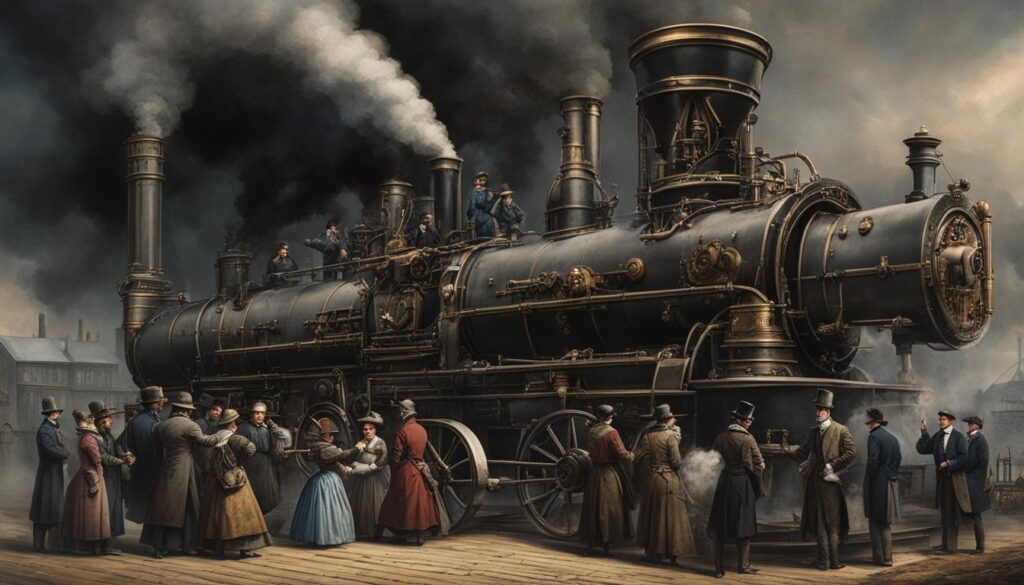
The Enduring Appeal of Steampunk
Amidst a world of ever-changing trends and fleeting fads, there exists a subculture that stands the test of time – steampunk. With its captivating blend of history, fantasy, and science fiction, steampunk has managed to carve out a lasting influence on popular culture.
From literature to films, television to music, steampunk’s fingerprints can be found on a variety of artistic mediums. Its unique aesthetic, characterized by Victorian-inspired designs and retrofuturistic technology, has captured the imagination of many. Steampunk’s ability to transport us to a world where steam-powered machines coexist with fantastical elements has contributed to its enduring appeal.
But what sets steampunk apart from other genres and subcultures? It’s the fusion of DIY culture and political dimensions that make this movement truly remarkable. By championing individualistic craftsmanship and rejecting mass production, steampunk challenges the closed nature of modern consumer technologies. It’s a form of protest that uses style as its weapon, creating a space for alternative narratives of progress and modernity.
As the future unfolds, it will be fascinating to witness how steampunk continues to shape and inspire new forms of artistic expression and cultural exploration. With its ability to seamlessly blend the aesthetics of the past with the possibilities of the future, steampunk is a genre that has proven its longevity. Whether it’s through its presence in literature, films, or even fashion, steampunk’s influence on popular culture remains undeniable.
FAQ
What is steampunk?
Steampunk is a subgenre of science fiction that incorporates retrofuturistic technology and aesthetics inspired by 19th-century industrial steam-powered machinery.
What are the literary influences on steampunk?
Steampunk draws inspiration from classic literature, particularly the works of Jules Verne and H. G. Wells, whose fictional machines and futuristic visions serve as the foundation for many steampunk narratives.
How has steampunk evolved beyond literature?
Steampunk has become a thriving cultural movement, with its own subgenres, conventions, fashion, art, and even music bands. It has inspired the creation of steampunk-themed manga and anime in Japan since the 1940s.
What is the political dimension of steampunk?
Steampunk is a form of protest against modern consumer technologies, emphasizing handmade craftsmanship and rejecting mass production. It incorporates elements of retrofuturism and challenges dominant narratives of progress and modernity.
Why does steampunk have enduring appeal?
Steampunk’s blend of history, fantasy, and science fiction in a visually captivating way sets it apart. It continues to influence popular culture through its presence in films, television, music videos, and literature.
Source Links
- https://en.wikipedia.org/wiki/Steampunk
- https://www.historians.org/research-and-publications/perspectives-on-history/december-2018/steampunk-for-historians-its-about-time
- https://scroll.in/article/1021734/steampunk-how-this-subgenre-of-science-fiction-challenges-the-beliefs-of-civilisational-progress

